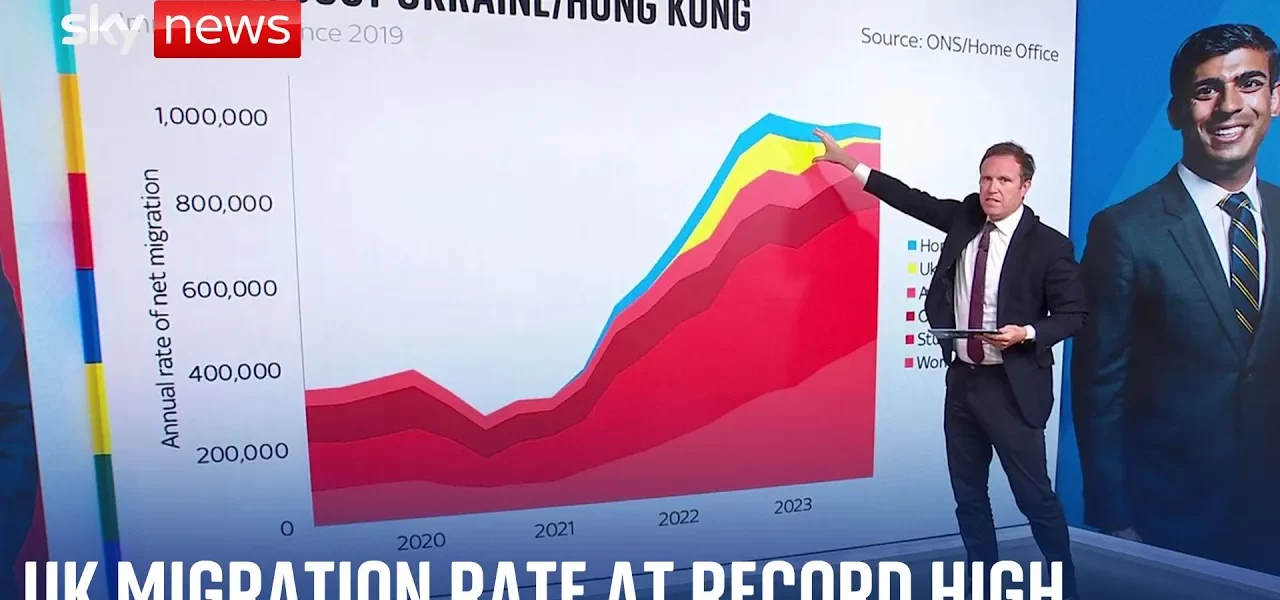Understanding Migration Misconceptions in the UK

This article delves into the pressing issues of migration in the UK, examining common misconceptions, current statistics, and the broader economic implications as the nation heads into a critical election period.
Introduction
Migration has emerged as a pivotal topic in the ongoing political discourse in the UK, especially as various parties present their claims and policies. As the country grapples with significant economic challenges, understanding the nuances of migration, particularly in relation to asylum seekers and employment, is essential. This article aims to clarify prevalent misconceptions surrounding migration, backed by recent statistics, and explore the implications for the UK economy.
Misconceptions About Migration
As migration becomes a focal point in political debates, it is crucial to address some common misconceptions that may distort public understanding. Here are three prevalent myths:
1. The Migration Crisis is Solely About Small Boats
One significant misconception is that the migration narrative predominantly revolves around individuals arriving by small boats. While this is a visible aspect of migration, it represents only a fraction of the total numbers. For example:
- In 2023, approximately 30,000 individuals arrived via small boats.
- In stark contrast, there were 81,000 asylum seekers entering the UK.
- Additionally, the number of people coming to study reached 379,000.
- Moreover, 423,000 individuals arrived for work purposes.
When combined, these groups contribute to over a million entries into the UK, illustrating that the small boat arrivals, while significant, are a minor component of the overall migration story.
2. Migration is Mainly From Ukraine and Hong Kong
Another common belief is that the influx of migrants is primarily from Ukraine and Hong Kong. While these groups have indeed made up a portion of new arrivals, the reality is that the majority of migrants come from diverse countries around the globe. The numbers from Ukraine and Hong Kong, although sizeable, are dwarfed by the total number of migrants from various other regions.
3. Current Migration Levels Are Normal
Many argue that the current migration levels align with historical trends. However, this perspective overlooks the unprecedented nature of today’s figures. Analyzing net migration—defined as the difference between those entering and leaving the country—reveals alarming trends:
- Net migration has reached a historic high, comparable to levels not seen in over 150 years.
- Historical data shows that migration patterns fluctuate significantly based on economic conditions.
Maintaining a historical context is vital when discussing migration trends in the UK.
Political Responses to Migration
As migration becomes increasingly politicized, leaders are proposing various policies aimed at controlling numbers. A notable recent pledge came from Prime Minister Rishi Sunak, who stated that the current immigration plan is working but acknowledged that migration levels remain too high.
Government Plans on Immigration
Sunak’s government has outlined a strategy to “stop the boats” and implement a legal cap on migration numbers. However, the specifics of this cap remain unclear, leading to questions about its feasibility and effectiveness:
- The exact figure for the migration cap is yet to be determined.
- Historical attempts to cap immigration, such as those by David Cameron and Theresa May, have consistently failed to meet set targets.
- Boris Johnson’s administration saw a shift away from caps, leading to an increase in migration despite initial expectations post-Brexit.
Calls for Zero Net Migration
In stark contrast, figures like Nigel Farage advocate for zero net migration, prompting discussions about the implications of such a stance. Historical data reveals that net migration has only reached zero during economic downturns, such as the recession in the early 1990s. This perspective raises significant questions about the economic impact of limiting migration:
- What would be the effect on job vacancies in critical sectors like healthcare?
- How would this influence wage inflation in the domestic labor market?
The Economic Implications of Migration
The conversation about migration cannot be divorced from its economic implications. The current workforce shortage in various sectors, particularly healthcare, highlights the reliance on migrant labor:
Workforce Shortages
With a significant number of job vacancies across the UK, especially in the NHS and social care, the need for migrant workers is acute. Without these individuals, many essential services would struggle to operate effectively. Key points include:
- Many positions remain unfilled due to a lack of domestic candidates.
- Migrant workers play a crucial role in sustaining the economy, particularly in times of recovery post-COVID-19.
Future Migration Policies
Looking ahead, the government must consider the balance between managing migration levels and ensuring economic stability. Stricter immigration policies could lead to:
- Increased wage inflation as demand for domestic workers rises.
- A potential rise in unemployment if job vacancies cannot be filled.
Ultimately, the focus should be on creating a sustainable immigration framework that addresses both the needs of the economy and the concerns of the electorate.
Conclusion
As we approach the upcoming elections, it is vital to clarify the misconceptions surrounding migration in the UK. By understanding the true nature of migration statistics and the economic impacts they carry, voters can engage in informed discussions about immigration policies. The need for a balanced approach that recognizes both the challenges and benefits of migration is essential. For further reading on related topics, explore our articles on UK Immigration Policies and The Economic Impact of Migration.
“`




